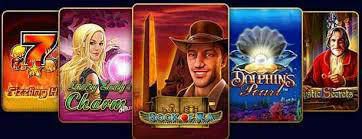# The Birth of Twister: A Game Revolution
Twister, the iconic party game that has taken living rooms and gatherings by storm since its inception, made its debut in the early 1960s. Created by Charles Foley and Neil Rabens, this game emerged from the desire to inject fun and physical interaction into social activities. While it may seem simple on the surface, Twister has become a cultural phenomenon, celebrated for its unique blend of laughter, competitiveness, and physicality.
# The Early Days: Concept and Creation
The origins of Twister can be traced back to 1964 when its creators initially conceived it as a “mat game” that incorporated the elements of both skill and chance. Foley, a game designer, and Rabens, an art student, sought a way to create a game that encouraged players to interact in unconventional ways. The earliest version of Twister was called “The Game That Ties You Up in Knots,” which perfectly encapsulated the game’s essence.
As the duo developed the game, they designed a colorful mat featuring large circles in four different colors: red, yellow, blue, and green. By spinning a dial to determine which color and body part players must place on the mat, the game promised not only a challenge of flexibility and balance but also offered an atmosphere of hilarity and camaraderie.
# The Launch: Marketing and Reception
Twister was officially introduced to the public in 1966 by Milton Bradley Company. Initially, it faced skepticism; some retailers were unsure about the marketability of a game that encouraged physical entanglement. However, the tide turned swiftly. The game’s breakthrough moment came when it was featured on the television show “The Tonight Show Starring Johnny Carson.”
In a memorable segment, actress Eva Gabor and Carson played Twister live on air, resulting in a whirlwind of laughter and excitement. This pivotal moment propelled Twister from a modest launch to a household name. Sales skyrocketed, and the game quickly became one of the most popular family games of the late 1960s.
# The Cultural Impact: Twister in the Spotlight
As the 1970s approached, Twister began to entwine itself in popular culture. It was not just a game but a symbol of youthful rebellion during a time of social change. Various television shows and movies incorporated Twister, showcasing its playful nature and ability to bring people together.
Throughout the years, Twister has appeared in countless pop culture references, from sitcoms to films, reinforcing its status as a classic. The game became synonymous with parties and social gatherings, proving that sometimes, the simplest ideas can have the most significant impact on social interactions.
# Evolution of the Game: Variants and Spin-offs
Recognizing Twister’s popularity, the game has seen many variations and spin-offs since its inception. The introduction of themed versions, such as “Twister: Disney Edition” and “Twister: Harry Potter Edition,” has allowed the game to reach new audiences and cater to diverse interests. These adaptations retain the core gameplay while fascinating players with various themes and characters.
Moreover, the game has expanded beyond traditional gameplay. Novelty concepts, including Twister tournaments, have emerged, where players compete in challenges that test their skills and flexibility. The rise of technology also affected Twister, leading to digital versions that enable players to experience the fun in various interactive mediums, including apps and video games.
# Twister Today: A Timeless Classic
Today, Twister remains a beloved game for all ages. It epitomizes the spirit of fun and engagement in social gatherings, whether at family get-togethers, college parties, or events. Its simple gameplay mechanic continues to draw players and new enthusiasts, even among a generation surrounded by advanced technology.
Manufacturers have kept the game relevant by introducing new features while retaining its signature aspects. For instance, the addition of “Twister Ultimate” incorporates new challenges, enhancing the game’s experience and maintaining its fun appeal. This evolution showcases Twister’s adaptability, enabling it to thrive over decades.

# Twister Around the World: Global Reach and Variations

While Twister originated in the United States, its popularity quickly spread across the globe. Different countries have embraced the game, often incorporating local twists that reflect cultural nuances. For instance, in some regions, players might play with musical variations, adding a soundtrack to their Twister experience.
As Twister continues its journey worldwide, it has proven to be more than just a game; it is a bridge that connects diverse cultures through laughter and shared experiences. International Twister events are becoming more common, as players from different backgrounds come together to celebrate this classic game.
# The Social Aspect: Building Connections
One of the most profound aspects of Twister is its ability to foster connections between players. The game encourages not only physical interaction but also communication and teamwork. Friends and strangers alike find themselves in humorous situations that break the ice and create lasting memories.
Researchers have even studied the psychological benefits of games like Twister, highlighting how they can promote social bonding and alleviate stress. Engaging in playful activities, especially those that foster laughter, positively affects mental well-being and strengthens relationships.
# Future of Twister: What Lies Ahead
As we look to the future, Twister appears poised to remain a beloved staple in social interactions. The demand for interactive experiences continues to grow, and Twister’s innovative expansions make it a strong competitor in the gaming industry.
Potential new developments include augmented reality experiences that could elevate the game with immersive technology. However, regardless of the changes ahead, the core principles of Twister—fun, laughter, and togetherness—will undoubtedly endure, welcoming future generations into the whimsical world of this iconic game.
# Conclusion: A Legacy of Laughter
Twister has stood the test of time, evolving with society yet retaining its essence. What began as a simple concept has blossomed into a cultural touchstone, uniting people through shared laughter and memorable moments. With its enduring appeal, Twister will continue to captivate audiences, proving that sometimes, it is the joy of connection and play that brings us closer together.
In a world that can often feel divided, games like Twister remind us of the power of laughter and the beauty of coming together, one twist and turn at a time.
